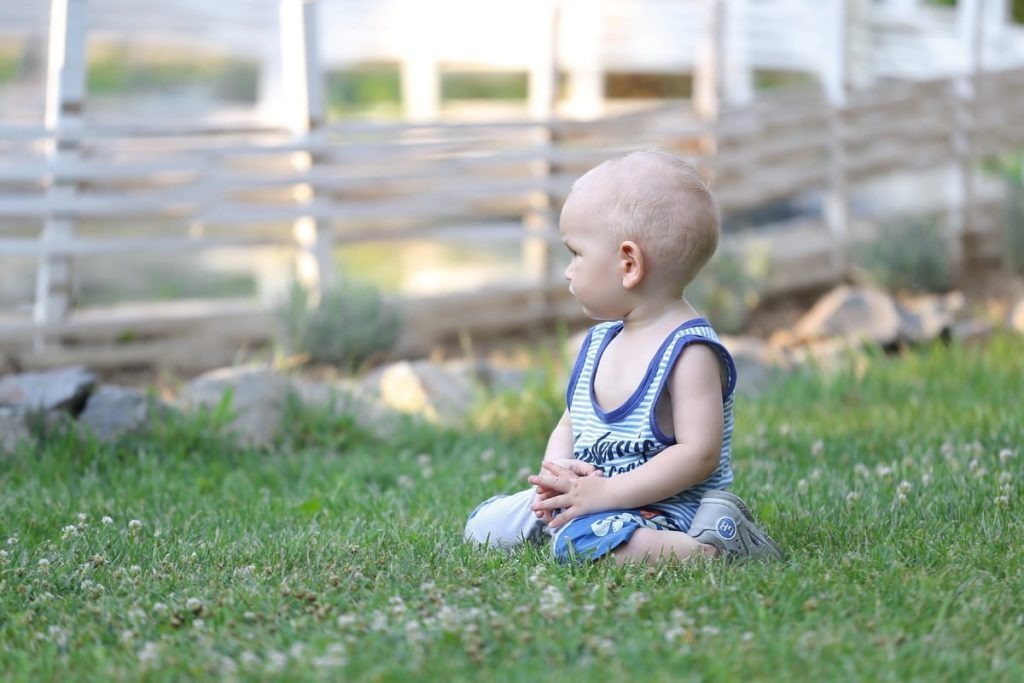Do you want to learn more about children’s brain development?
Paediatrician Catherine Gueguen, a reference in the world of education, in her best-selling book “For a Happy Childhood”, gives us reading keys to understanding a child’s brain development.
It is a book both theoretical and practical, which I read with great interest and pleasure.
I took care to transcribe the key passages in the article below.
I hope that these notions can be useful to you.
Understanding child brain development
The child’s affectivity, the desire for relationships, begins at the dawn of their life.
The atmosphere in which the child lives will be decisive for their future life.
From conception until the age of six, the child’s brain is very immature and in full formation.
It, therefore, presents amazing plasticity allowing to record in new circuits all the lived experiences.
The child has the same basic needs as adults and wants to be fully respected, to receive empathy and to be loved.
We are a model to them.
The three brains of the human being
To begin with, we have three brains:
- Archaic: it is the reptilian brain that manages the basic functions of respiratory, sleep, blood pressure. It is triggered by the dangers of instinctive behaviors related to our survival.
- Emotional, that is, the limbic system. It makes us feel pleasant and unpleasant emotions. It plays a regulatory role in the primitive instincts of survival
- Superior is the neocortex that deals with higher cognitive functions such as consciousness, language, learning ability, sensory perceptions. This brain is the source of reflection.
A large part of the brain forms during the first five years of life, its maturation lasts until the end of adolescence and until the third decade of life for certain brain regions.
After birth, the formation of the synapses is very intense. Millions of connections are made and re-made based on lived experiences.
During childhood and adolescence, the brain loses half of its synapses and keeps the circuits that are used. Any event that can alter circuit formation has major consequences on a child’s brain development.
Fetal and baby brain development
During intrauterine life, and the first two years of life, the brain is particularly sensitive to the effects of stress and the environment. It is also sensitive to the influence of nutritional bills, toxic products of pollution.
The development of neurons, the formation of synapses, the endocrine functioning that regulates stress are influenced by the environment.
Mothering in the first days of life promotes the development of the neural system and the proper development of cognitive functions.
Our relationships, our experiences determine which circuit and which brain connection will persist.
Children’s brains are particularly vulnerable
A child cannot react like an adult because brain structures are not yet functional enough. This explains how difficult it may be for the child to control their emotional reactions.
Currently, thanks to brain imaginary techniques, researchers are beginning to better understand how the brain works in relational situations.
Numerous studies show that the volume of the prefrontal cortex is correlated with the size of the social group.
Thus, the greater volume in human beings could reflect the very complex mechanisms necessary for social relations that underpin the cohesion of the group.
In adults, the prefrontal cortex makes it possible to make the right decisions in the face of emotions.
During infancy, the prefrontal cortexes are still immature and therefore unable to play this role of emotional regulator.
Uncontrollable emotions as an adult
Some adults find themselves like young children invaded by powerful emotions without being able to calm them down.
The causes of this poor development of the prefrontal cortex are multiple, but one of them is the violence that some people experienced during their childhood.
The prefrontal Orbital cortex is crucial to our social life: it plays an essential role in our capacity for affection, empathy, and the regulation of our emotions.
This region is sensitive to the eye.
“When our gaze plunges into the eyes of the other, our center of empathy penetrates deep into the soul of the other to understand it.”
If the Cortex is injured, the person will have social disorders and will no longer be able to make the right decisions.
The development of the cortex depends on the child’s experiences.
When the child is abused, the cortex has significant alterations.
Around the age of 5.6 years, the child begins to control their negative emotions a little better.
As a result, they can understand their causes and know how to overcome them.
This region matures in early adulthood. Each time the toddler observes someone managing to get through an emotional conflict calmly and accurately, circuits of the frontal orbital cortex record the scene and strengthen.
The anterior cingulate cortex plays a key role in transforming our feelings into intentions and actions.
The anterior cingulate cortex is active in cases of physical pain and social rejection. Social rejection is felt as intensely as physical pain.
Understanding the baby’s crying
The child cries to signal emotions and to call for help.
Fatigue is quite common in toddlers because their attention span is very short. Too stimulated, they feel overwhelmed and cry. Very often when they are looking for sleep, they cry. As no one answers their calls, the child learns not to connect with what they feel.
The child will no longer express their emotions, sorrows and tears. A child who is said to be very wise when they are less than five years old, must attract the attention of adults.
The role of the amygdala in regulating emotions
The amygdala is the place where our first emotional expressions develop.
It plays a significant role in our fear reactions. During the first years of life, the perfectly mature amygdala triggers in the child many reactions, which they are unable to manage alone.
The amygdala is the center of fear and is perfectly mature from birth but the brain structures capable of slowing the amygdala: the orbital-frontal area and the orbitofrontal are poorly functional.
The amygdala participates in our unconscious emotional memory:
- Implicit Memory: Procedural Memory for the Acquisition of Know-How.
- Explicit memory: episodic memory that concerns our personal life.
The explicit memory passes through the hippocampus. In children, the hippocampus is still immature while the tonsils are already able to store unconscious memories. That’s why we don’t remember the events of the beginning of life.
But at the dawn of life, unconscious and already active implicit memory and early trauma can be born and lead to mental disturbances in adulthood but inaccessible to consciousness.
All childhood memories of fear keep an imprint in the amygdala unconsciously and sustainably.
The amygdala stores these memories and does not forget them.
These feelings of fear continue to work in children without their awareness, altering and disrupting them.
“Sometimes it is enough to evoke the painful event in front of a person who proposes a different vision to gradually free himself from a memory by re-encoding it.”
The importance of talking to children
Words can change the way the brain records our painful memories. The child is not able to understand what happened in them or to name themselves because they cannot yet realize and find words for their emotions and feelings. It cannot calm are tonsil.
If the adult offers words and asks if they agree with them, they help the child to become aware of what they are going through.
The Hippocampus is mature at birth and occupies a central place in learning, conscious emotional memory and long-term memory.
It sorts the information that comes to it and allows us to remember the emotions that invaded us during a frightening event. The amygdala participates in the visceral translation of fear.
Everything we have learned and all our memories depend on the hippocampus. It manufactures new neurons throughout our lives and constantly redesigns them according to our learnings.
Stress in children
Stress causes cortisol secretion. In excessive amounts, it attacks the neurons in the hippocampus, slows their multiplication, decreases their number, which has a disastrous effect on learning and memory.
Cortisol activates the amygdala so fear and dumbbells the hippocampus.
Mothering promotes the development of the hippocampus.
The hippocampus and cerebral cortex that allows us to have conscious memories are immature in the small child.
It is probably around 18 months that the maturation of part of the hippocampus begins, this explains the amnesia of memories of our infancy.
The callous body is a network of fibers that transmits information between the two cerebral hemispheres.
In children, the callous body is not yet mature, so it is unable to properly circulate information between the two frontal lobes. So, each hemisphere works independently. This is why the child has sudden mood swings.
Two systems regulate our stress response:
- Vegetative nervousness responds immediately and releases adrenaline.
- Neuro-endocrine that releases cortisol.
The vegetative nervous system
If the child lives in a very stressful environment, high amounts of adrenaline are released and the consequences are multiple: more frequent infections, problems with breathing, appetite, digestion, sleep, headache, panic attack, fatigue.
When you console an anxious child, you regulate the vital functions of their body that are disrupted by stress.
Besides, loving contact allows the release of particularly important anti-stress substances: oxytocin and opioids.
The neuroendocrine system
This axis is made hyperactive by stress, resulting in cortisol secretion. The consequences are immediate on the child and their adult life. They will be constantly hypersensitive to stress with anxious manifestations. When the child is anxious, angry and deprived of comfort, their brain is filled with adrenaline, neuro-adrenaline and cortisol.
Stress in early childhood profoundly impairs the functioning of neurotransmitters in the amygdala. This includes dopamine (motor control, attention, pleasure, motivation, sleep, memory), serotonin (sleep, mood, appetite, pain, temperature regulation) and gaba (anxiety regulation, motor control and vision).
Periods of great fragility begin from intrauterine life.
The consequences of the diffusion of these stress-reactive molecules can persist for a lifetime.
Resilience is the ability to lead a normal life despite traumatic experiences. Many studies have figured out that the most crucial factor of resilience is the meeting of caring, supportive, loving people.
I hope this reading has been useful for you to better understand children’s brain development.
Don’t hesitate to react in the comments to give your opinion on the article and provide additional information to improve it.




